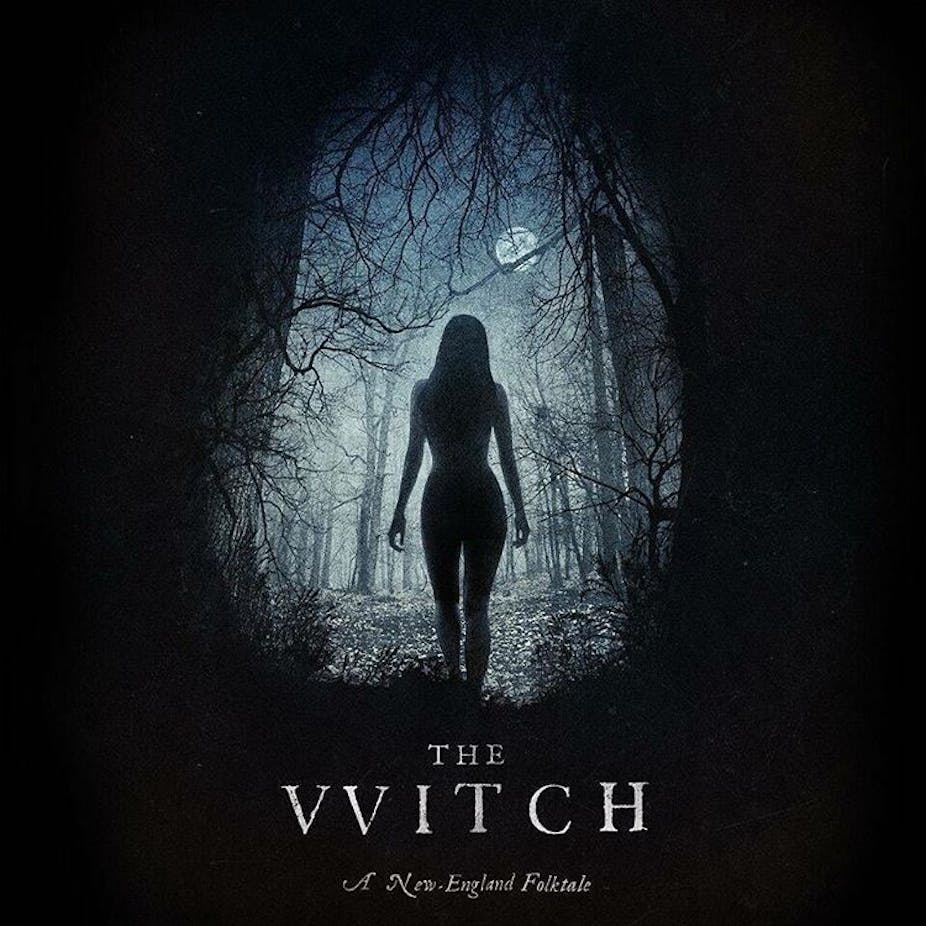From The Wizard of Oz to Harry Potter, Macbeth to Bewitched, witches have long been a part of popular culture. Witches are now regularly presented as cuddly feminists, but Robert Eggers’s new film The Witch: A New England Folktale vividly reminds us of the horrors lurking behind the fantasy.
The is a horrifying tale of 17th-century New England, where witches roam the deep, dark forest kidnapping settlers’ children so they can boil down their fat and bones for ointments which help them to fly. Witches were said to be able to fly on broomsticks, perhaps because the broom was a symbol of female domestication, and flying on it was the ultimate rebellion.
In the 1600s, in both new and old England, and across the European continent, people often believed witches were “difficult” women (sometimes difficult men) who hated their neighbours and cursed them with sickness and bad luck.
As in the film, witches were thought to be attracted to children, particularly by their innocence and corruptibility. Children’s small, soft bodies could easily be sickened by spells or possessed by demons and they were especially vulnerable before they had undergone the ritual of baptism, because they weren’t thought to be protected by the christian church.
In the supposedly rational modern world, these superstitions may now seem ridiculous, but the fact that we still shudder when we hear such tales is a telling sign of the witches’ power.
Toil and trouble
Anxieties about children being kidnapped and murdered by witches were strongest in southern Germany, western France and the Alpine countries – and it was here that the persecutions were carried out most enthusiastically. In these areas, witches were said to meet in groups of several hundred, worshipping the devil in the form of a man or a goat, holding orgies and plotting evil.
In Britain and the American colonies, witches were more likely to be accused of less dramatic activities, not necessarily devil-worship, but certainly murder and mischief on a smaller scale. They were not usually thought to be able to fly – so not much need for the baby-fat recipe – but every now and again, a truly horrific story was told.
In Lancashire in 1612, the teenage Grace Sowerbutts explained how three women had transported her around the countryside, making her dance and have sex with strange black creatures. She added that they had broken into a neighbour’s house and murdered his sleeping baby by sucking its life out through the navel.
After the child’s burial, they dug up the body, boiled and roasted it. They ate some and saved the rest for flying ointment. The court rejected Grace’s evidence, however: her story was just too unusual in England – even in the age of the witch. It was explained away as the work of a renegade catholic priest making trouble for good protestants.
Fire burn and cauldron bubble
While it was easy for devout people then to imagine a malign devil lurking in the shadows, witchcraft was not immediately used to explain every misfortune. In America, the early protestant colonists felt protected by a “good” god – much like in the film.
The film’s settlers experience exactly the miseries endured by their real counterparts: crop failure, hunger, disease, animal attacks, loss of faith. Under the circumstances, they hold out pretty well. But once the first accusations of witchcraft are made, it becomes horribly easy for communities to turn on each other.
One heartrending 1662 tale from Hartford, Connecticut tells how eight-year-old Bethia Kelly died of an inexplicable disease, her last hours disfigured by fits and claims that an invisible spirit sent by her neighbour Goodwife Ayres was pressing her belly and bowels. Another girl, Ann Cole, then began to name further people as witches, including Rebecca and Nathaniel Greensmith. In the end, even Rebecca came to agree that her husband Nathaniel was a witch.
Nathaniel had met strange creatures in the forest, Rebecca told the court, and although he was a small, weak man, he was suddenly capable of huge feats of labour. None of this could be natural, surely? Both the Greensmiths were executed, along with at least two fellow-accused. Others spent years in jail.
For these tight-knit communities, it was often incredibly hard to rebuild after the “touch of a witch”. Once accusations began, they quickly spread like wild fire. Sometimes it was just easier for “witches” to run away, than try to explain themselves. Even their own family would turn against them, and it was safer to drop everything and run.
The Witch allows us, modern viewers, to see how easy it would be for our ancestors, driven by misapplied faith and pressed by calamity, to believe in and persecute witches – and why people still do so in some places today. In fact, staring into the dark forests brought to life the film, it’s hard not to wonder why the early American colonists didn’t become even more obsessed with the mysterious forces and withccraft that may have been lurking within.

